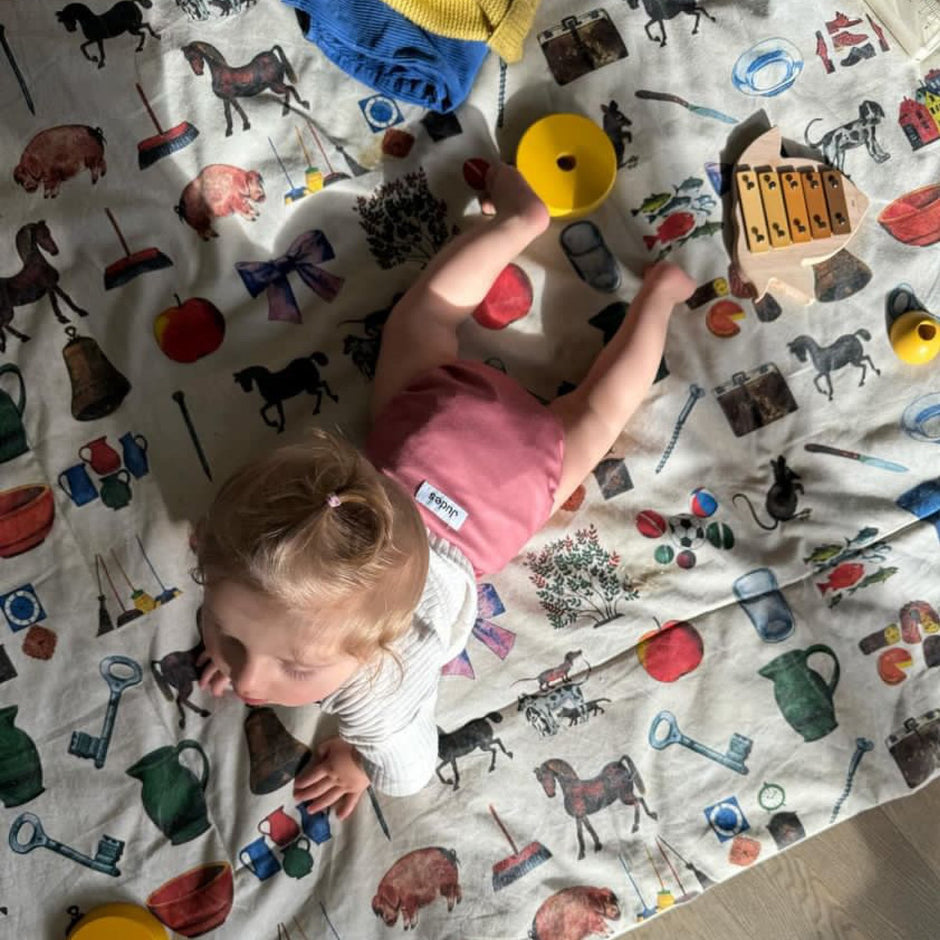Eco-Friendly Nursery Design: Sustainable Ideas and Inspirations
Updated on:
Photo by @cecilia.capri
Sustainability and environmental protection are becoming increasingly important, so it is all the more significant to establish these values from the earliest phases of life. The nursery - a place where children have their first experiences - is the perfect place to start with environmentally-friendly and eco concepts.
Can you design a sustainable nursery? Yes, it is indeed possible to design a sustainable nursery. This can be achieved by opting for eco-friendly furniture, non-toxic materials and choosing furniture that grows with the child. Additionally, you can use child-safe plants and second-hand items, which significantly contribute to an eco-friendly and healthy space.
Designing a nursery is more than just a matter of style. It's about creating an environment that is not only safe and cozy for the baby but also positively contributes to the protection of our environment. In this article, we show you how ecological design in a nursery can be realized through sustainable materials, intelligent room design, and products that benefit both the environment and your child.
Tips for Designing the Nursery
Designing the nursery offers a wonderful opportunity to combine creativity and functionality while simultaneously creating a safe and stimulating space for your child. Here are some tips to create a child-friendly and appealing nursery:
- Choose Colors and Patterns: The color palette in the nursery plays a significant role. Soft, calming colors like pastels can create a peaceful atmosphere, while more vibrant colors and patterns can stimulate the senses. Remember to use non-toxic paints to create a healthy environment for your child.
- Choose Furniture Carefully: Safety and durability should be the focus when selecting furniture. Pieces that grow with your child, like height-adjustable changing tables or convertible cribs, are not only sustainable but also cost-effective.
- Natural Light and Lighting: Use natural light wherever possible and complement it with gentle, indirect lighting. Thoughtful lighting is not only important for the development of your child's vision but also creates a warm and inviting atmosphere.
- Safe and Practical Storage Solutions: Ample storage is essential to maintain order and keep dangerous items out of the child's reach. Choose storage solutions that are both safe and easily accessible to you for smooth usage.
- Use Natural Materials: Opt for natural materials such as wood, cotton, or bamboo. These materials are not only environmentally friendly but also safer for your child as they are less likely to contain harmful chemicals.
- Flexibility and Space for Growth: Design the room so it can easily adapt to the changing needs of your child. A flexible room design allows you to redesign the room with minimal effort as your child grows.
By following these tips, you can create a nursery that is not only aesthetically pleasing and child-friendly but also adheres to the principles of sustainability and environmental protection.

Photo by @oliviafarjo
Designing a Nursery: What To Consider
Designing a nursery is an exciting task, but there are a few important things to consider to create an optimal environment for your child:
- Retreats for Peace and Security: It's important to create areas in your child's room that convey peace and security. A cozy corner with a soft rug, cushions, and perhaps a small tent can provide a perfect retreat for your child to relax and play.
- Use Storage Space Cleverly: A nursery can quickly feel cluttered if there isn't enough storage space. Use multifunctional furniture like beds with built-in drawers or shelves that can serve both as storage and decoration. Remember that storage options should be safe and inaccessible to your child to prevent accidents.
- Safety First: Safety is paramount in the nursery. Ensure all furniture is stable and has no sharp edges. Safety gates on windows and child-safe electrical outlets are also important protective measures.
- Mind the Air Quality: Good air quality can positively affect your child's health. Avoid furniture and materials that may have harmful emissions and ensure regular ventilation of the room.
- Flexible and Adaptable Room Design: Choose elements that can easily adapt to the growing needs of your child. Design the room so that it can grow with your child without needing a complete redesign. Avoid making it too theme-specific.
By following these tips, you not only create an aesthetically pleasing and functional nursery but also a safe and loving place where your child can thrive and develop.
Bring Nature into the Nursery
Introducing nature into the nursery is a wonderful way to create a calming and healthy environment for your child. Here are some tips on how to effectively and safely integrate plants into the nursery:
- Select Child-Friendly Plants: Not all plants are suitable for the nursery. Choose non-toxic, hardy plants that do not cause allergies and are easy to maintain. Examples of child-friendly plants are pothos, spider plant, and snake plant.
- Benefits of Plants in the Nursery: Plants can improve air quality by filtering pollutants and increasing humidity. They also contribute to aesthetic design and offer a natural learning opportunity for your child by sparking curiosity about nature.
- Safety First: Ensure plants are out of reach of your child, especially when they start to crawl and walk. Use sturdy plant containers and avoid sharp leaves or plants that could easily break.
- Correct Placement: Place plants where they receive enough light but are not directly in the sun. Avoid placing plants above the changing table or crib to prevent soil and water from falling or dripping. You can find more tips for designing the changing area in our blog.
- Incorporate into Room Design: Use plants as part of the overall design of the nursery. They can serve as accents in corners, on shelves, or in hanging planters, helping to create a relaxed and natural atmosphere.
By introducing plants into the nursery, you not only create a visually appealing environment but also promote the health and well-being of your child.

Photo by @ammenmaerchen
Tips for Choosing Furniture in the Nursery
Choosing the right furniture is crucial for creating an eco-friendly and functional nursery. Here are some important tips to consider when selecting furniture:
- Opt for Eco-Furniture: Eco-furniture is made from sustainably sourced materials and is free from harmful chemicals. They offer a healthy and eco-friendly option for the nursery. Look for certifications like FSC or PEFC, which guarantee sustainable forestry.
- Furniture that Grows with Your Child: Invest in furniture that can adapt to your child's growing needs. Examples include convertible cribs that can be transformed into toddler beds or changing tables that you can later use as regular dressers.
- Choose Non-Toxic Materials: Ensure all furniture is free of toxins. This includes using non-toxic paints, lacquers, and adhesives. Solid wood furniture is often a good choice, as it is durable and free from harmful emissions.
- Sustainable Materials: Besides wood, there are other sustainable materials like bamboo or recycled materials. These offer an eco-friendly alternative to conventional furniture and contribute to a healthy room environment.
- Use Secondhand Furniture: Consider using secondhand furniture. This is not only cost-effective but also reduces the environmental footprint. However, ensure that the used furniture is safe and in good condition.
- Practicality and Safety: Safety is always the top priority. Ensure the furniture is stable and has no sharp edges. Additionally, they should be practical and easy to clean, to facilitate everyday life with your baby.
Sustainability in Detail: Choosing the Right Diapers
Now that we have looked at various aspects of sustainable nursery design, it is time to address one of the most important aspects in a newborn's life: diapers. Choosing the right diapers is crucial not only for the comfort and health of your baby but also for the environment.
Cloth Diapers as an Eco-friendly Alternative
More and more parents are choosing cloth diapers as an eco-friendly alternative to conventional disposable diapers. Cloth diapers significantly reduce waste and are even more cost-effective in the long run. Additionally, they are healthier than disposable diapers and gentler on your baby's sensitive skin, as they are free from chemicals found in many disposable diapers.
Judes: Simplicity and Sustainability Combined
At this point, we would like to introduce Judes to you. We are a start-up dedicated to the production of simple, stylish, and environmentally friendly cloth diapers. Founded from our own experience as parents, we, Nele and Leon, have made it our mission to develop a cloth diaper that is not only eco-friendly but also user-friendly.
Judes diapers are the result of intensive research and development, inspired by the best features of various diaper brands worldwide. With a focus on simplicity and functionality, our diapers offer a practical solution for modern parents who value sustainability and comfort.
For Judes, we have developed a special fabric that is extremely absorbent yet thin. Our diapers keep your child dry for up to 12 hours without being too bulky. The simple system of inner diaper and cover also ensures quick and easy diaper changes.
Judes parents are thrilled with the absorbency:
“For morning and afternoon naps, I always put my daughter in a Judes diaper – because of the better absorbency, the nice fit, and the softness of the Judes diapers. Even in warm weather and on long car rides, I prefer a Judes diaper. Sometimes I even consider switching entirely to Judes.”
(Jeantine Bovendeert)
“We love Judes! With our middle child, we tried out several other diaper brands in parallel, but we stuck with Judes. Overall, it has the easiest system with a superb (!) absorbency that can be individually enhanced with boosters. So flexible, even the daycare is impressed. For our little one on the way, we've now also decided on Judes out of sheer conviction.”
(Nina Finke)
“We are more than satisfied with the diaper package and can really recommend it to everyone. The diapers are leak-proof, more absorbent than disposable diapers, and more comfortable for the baby.”
(Enrico Albrecht)
A Sustainable Family Business
Judes is more than just a company – it is a family project born out of the desire to create a better future for the next generation. By refusing investors and committing to sustainable, environmentally-conscious practices, Judes demonstrates that it is possible to align entrepreneurship with family values.
By choosing Judes cloth diapers, you not only contribute to your child's well-being, but also support a responsible approach to our environment.

